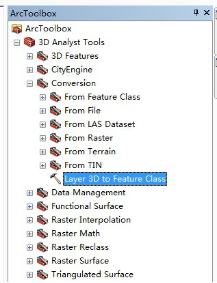
OutDir = arcpy. # Determine if feature class is a multipatch # Determine if the list contained any feature classes # Create list of feature classes in workspace InWorkspace = arcpy.GetParameterAsText(0) This process does not use a datum transformation, which may result in positional discrepancies when viewing the KML. kml file containing the coordinates as WGS84 will also be created in the output folder. If the exported multipatch is in a projected coordinate system, such as a building stored in a UTM zone, a. This will keep a single file on disk for that feature, representing the most up-to-date state of the 3D object. When iteratively updating a multipatch feature by exporting it to COLLADA and making changes outside of ArcGIS, export the feature to the same location each time. Exporting two features with the same attribute value will result in the second exported feature overwriting the COLLADA file of the first. To ensure a new COLLADA file is created for all exported multipatch features, set the destination directory to an empty or new folder and choose a file name field that is unique for each feature. A geoprocessing message is also generated for features that fail to export-for example, if the output location is read-only or the disk is full. When this occurs, a warning message appears stating the files that were overwritten with a new file during the export process. This tool automatically overwrites existing COLLADA files with the same file name. To minimize the total export file size, textures that are used in multiple COLLADA files-such as a repeated brick or window texture-are only exported once and are referenced by the applicable. Texture files are stored in the same directory as the COLLADA file. This allows the identification of which feature was exported to which COLLADA file and provides the methodology for defining unique names when exporting multiple features to the same directory.

You'll obtain a polygon shapefile with the original multipatch's attribute table. The tool uses a field value from each feature-by default, this is the Object ID-to define the output file names. 1 Use the 3D Analyst Tools -> Conversions -> 'Multipatch Footprint' in ArcGIS. This tool creates one COLLADA representation for each multipatch feature that it exports. dae file containing the XML representation of the 3D object and one or more image files (for example, a. This means that exporting a multipatch feature to COLLADA can result in the creation of several files-a. I noticed that 3D editing works better in it.A COLLADA file is an XML representation of a 3D object that can reference additional image files that act as textures draped onto the 3D geometry. Try running the Enclose Multipatch tool then try editing again: Īlso, it’s worth updating to PRO2.5 if you can. Regarding the split/Merge/Divide, there can be some issues with the geometry (maybe).

Specifically, the cleanup faces tool: Worth getting a trial.Īlso, there are several bugs reported for v 2.2 – 2.3 related to multipatch texturing. I have extruded building footprints using the height of each building in ArcScene. Do you have CityEngine? I noticed that it’s excellent at fixing issues with multipatches.
MULTIPATCH TO COLLADA READ A FEATURE CLASS PRO
Bring it back to Pro and check if that helped.Ģ. In SketchUp, explode the model and r-click on the face (side) where the texture is showing incorrectly > reverse faces. If you have SketchUp, import your model (you might need to convert your multipatch to Collada or KML/KMZ i.e. it’s facing the interior of the model, rather than the exterior. Regarding the issue with the texture, when you say “the image is reversed on the surface”, does it mean it’s kinda “looking inwards”? If so, it might mean that the face (the side of the model to which it’s applied) is inversed – i.e. Converts one or more multipatch features into a collection of COLLADA (.dae) files and referenced texture image files in an output folder.

If the issue isn’t solved yet, I may offer a couple of recommendations.


 0 kommentar(er)
0 kommentar(er)
